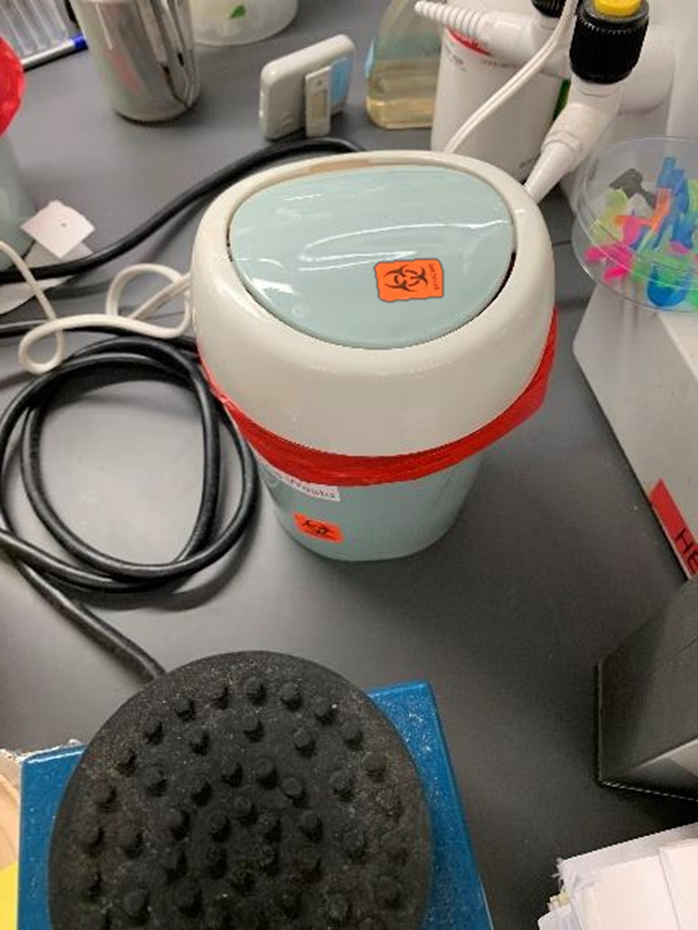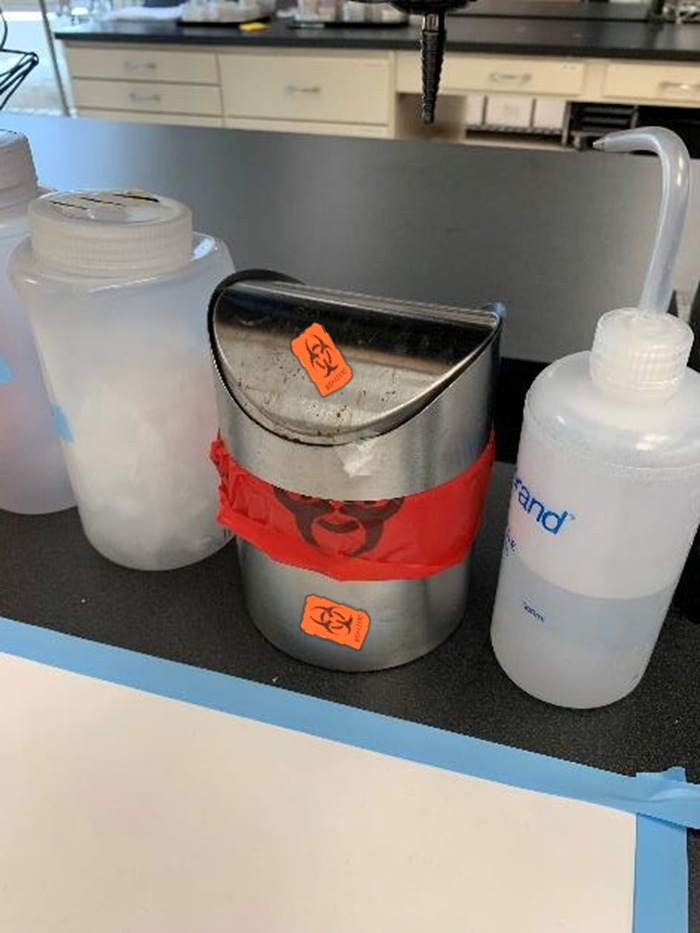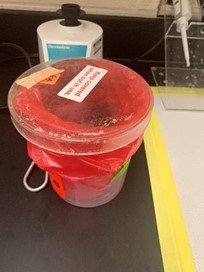Biological waste containers are labeled and have closed lids
Corrective actions:
- Select appropriate container for the amount and size of waste to be collected
- Ensure container has a lid. Aluminum foil or a petri dish that allows the container to close is acceptable.
- Place biohazard stickers on side and lid of container.
- Keep containers closed when not in use.
- Empty temporary container at the end of each working day.
- Ideally containers should have hands-free lids.
These are examples of acceptable temporary containers:
a. Plastic container with swing lid

b. Metal (autoclavable) container with swing lid

c. Laboratory plastic beaker with Large Petri dish used as a lid

Additional information:
All biohazardous waste is to be collected and separated from other types of waste generated in the laboratory, it also must be packaged, contained and located in a manner that prevents and protects the biohazard release at the producing facility at any time before ultimate disposal.
Biohazard bags used for collecting and autoclaving waste must be placed in hard sided waste containers to prevent ripping and tearing, which may result in releasing of the biohazards. These containers must be labeled with a biohazard sticker and kept closed except when adding waste to minimize exposure to lab personnel.
Temporary containers can be used on the benchtops and inside biosafety cabinets and should be emptied into main containers at the end of the day.
References:
- NIH Guidelines for Research Involving Recombinant or Synthetic Nucleic Acid Molecules. April 2019. Section IV-B-7-d-(1), (2) and Appendix G.
- BMBL 6th ed. HHS Publication No. (CDC) 300859
- MSU Biosafety and Security Manual
- MSU Bloodborne Exposure Control Plan
- MSU Waste Disposal Guidance

